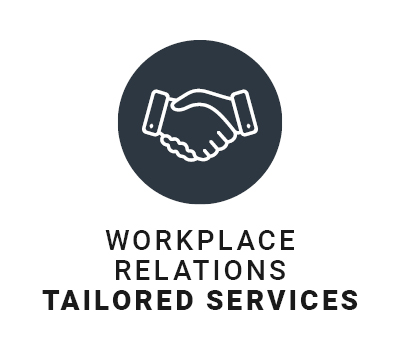Best approach to underperformance
Do you need Workplace Relations support for your practice? Would you like to stay up to date with relevant legislation and awards? Would you like some help with workplace policies and procedures? Do you need assistance with a difficult conversation or poor performance? Contact the AMA Queensland Workplace Relations Team today on (07) 3872 2264 to find out how you could be receiving this kind of content regularly.

As an employer or Practice Manager it is always best practice to have regular catch ups and discussions with your team regarding how they are getting on at work and about their performance. This is a great opportunity to provide them with achievable goals, constructive feedback and ongoing support. If you are going to wait until their annual review to raise any issues, then it may be too late to resolve them.
Underperformance could have a serious impact on the team and the practice if not addressed in a timely way. A best practice approach involving steps to manage underperformance appropriately, sensitively and promptly can produce the following benefits;
- A more harmonious, high performing workplace
- Maximizing an employees individual performance
- A culture which is based on continuous improvement and skills development
- Employee engagement
- Low risk of unfair dismissal or bullying claims
- Addresses possible psychosocial risks and hazards
A best practice approach formulae can be satisfied by following these 5 steps.
- Identify the issue.
- Assess and analyse how serious the issue is and determine if there are contributing factors, whether they be external or internal.
- Meet with the employee to discuss and explain the issue and why there is a concern.
- Decide on a joint solution such as a performance improvement plan, training or flexible working if appropriate.
- Monitor and review ongoing performance and keep in regular contact with employee.
Identify the issue
The cost of underperformance can be felt across the Practice from having reduced productivity, loss of revenue and low morale. But what is underperformance anyway? Underperformance or poor performance can include:
- Not performing duties, or not performing them to the required standard
- Displaying negative or disruptive behaviour in the workplace
- Failing to comply with workplace policies, rules or procedures
- Increased absenteeism which puts an unfair burden on teammates
You will need to be able to show examples of the behaviours or actions that are causing the issues, when it is happening and the effect it has having on them, the team and potentially the Practice.
It is important to note that underperformance is not the same as serious misconduct which includes deliberate unprofessional, dangerous or unlawful behaviour, such as theft, fraud, sexual harassment or assault which may warrant instant dismissal. Please refer to your contracts of employment as well as your disciplinary policy prior to considering instant dismissal. Contact Workplace Relations for immediate assistance.
Assess and determine if there are contributing factors
So, once you have recognized and established that someone in your team is underperforming then as part of your best practice approach, you should identify if they are mentally able to have difficult conversations around their performance.
This step is in line with the Workplace Health and Safety Act whereby employers, managers and leaders eliminate and minimize the risks to psychological health. Essentially employees should be no worse off than when they arrived at work. If it is determined that the underperformance is linked to mental health the next steps are to determine if the workplace in anyway contributed to this reality through:
- High or low job demands.
- Low job control
- Poor support
- Low role clarity
- Poor change management
- Poor workplace justice
- Undealt with interpersonal conflicts
- Bullying
- Harassment
- Remote or isolated work
- Poor work environment
- Traumatic events
- Violence and aggression
At times this information might come up through the underperformance process rather than before and if that is the case, the situation must be resolved as expediently as possible before reevaluating whether there is a performance issue.
Initial meeting with the employee
When meeting with the employee make sure the room is private, comfortable and non-threatening environment and not overheard by others. During the meeting you should:
- Outline the issue and refer to specific examples (you should have established this during step one)
- Explain the impact on their work and those around them (if applicable)
- Give the employee the opportunity to respond (This is a legislative requirement)
- Listen and ask questions to understand the employees response to the problem and why it may have occurred
Depending on how and the way in which the employee responds very much forms the next steps
Joint Solution where possible
An employee is more likely to improve their performance if they feel that they have contributed to this process. When coming up with a solution you should:
- Make it very clear the changes that need to be made
- Offer appropriate support and assistance
- Consider recording the agreed actions in a Performance Improvement plan which clearly sets out what the employee needs to do to improve their performance.
- Both of you should keep a copy of the performance improvement plan
- Specify if there will be any further consequences if the performance improvement plan is not followed through or the desired outcomes are not achieved.
After each meeting follow up with an email giving an overview of what was discussed and ask the employee for a response to the email on any points that may have been missed or anything they don’t understand. This will give you an insight into their comprehension of the meeting that took place.
Monitor and review ongoing performance
Once you have agreed on a solution and put a plan in place it is really important that you follow through with what was discussed and decided upon. Eg;
- Provide any training that has been identified
- Regularly check in the employee to discuss how they are progressing
- Continue giving them feedback
- Have a follow up discussion at an agreed date and time
- If you have a performance improvement plan in place then update the plan as required
Link between contributing factors and underperformance
The link between contributing factors and underperformance can be summarised by a few of these issues below;
- Issue – Employee does not undertake work as required or understand job requirements or directions. Possible cause could be;
a. Poor job context when recruiting and an unclear position description
b. Employee has been hired in a role that they are unqualified for
2. Issue – Employee fails to acknowledge they are underperforming
a. Performance issues have not been adequately explained to them, they may be unaware they have been underperforming
b. Lack of supervisory communication
3. Issue – Employee does not complete work tasks to the required standard
a. Lacks the required skill and capabilities
b. Has not received any or adequate training
4. Issue – Employee is cynical and negative in the workplace
a. They may be disillusioned with the workplace culture
5. Issue – Employee is regularly absent without cause
a. Management style
b. If the pattern of absence is every Monday, there may be recreational drug issue or alcohol issues
c. Personal or other workplace issues
This article should be used as a guide as people are individuals and often add a layer of complexity. For practical tips relating to anything outlined in this article or to purchase the Workplace Relations underperformance pack please contact the Workplace Relations team on 07 3872 2264 or email us at workplacerelations@amaq.com.au if you have any questions regarding anything in the above article.
|
Workplace Relations Support can help you with any questions you may have with what to pay your staff on public holidays coming up in the future. You can contact us via phone (07) 3872 2222 and email support workplacerelations@amaq.com.au. |
|
|
Workplace Relations Toolkit provides its subscribers with up to date information about entitlements in regards to pay rate increases and public holiday payments for your practice. It also comes with a range of policy templates, in particular, leave policies, which will assist with dealing with bulk leave applications during these holiday periods. |
|
 |
Workplace Relations Tailored Services The Workplace Relations Tailored Services provides individual and comprehensive advice on how to approach unique situations within private practice such as redundancy, closing a practice, opening a practice and other workplace relations situations. |